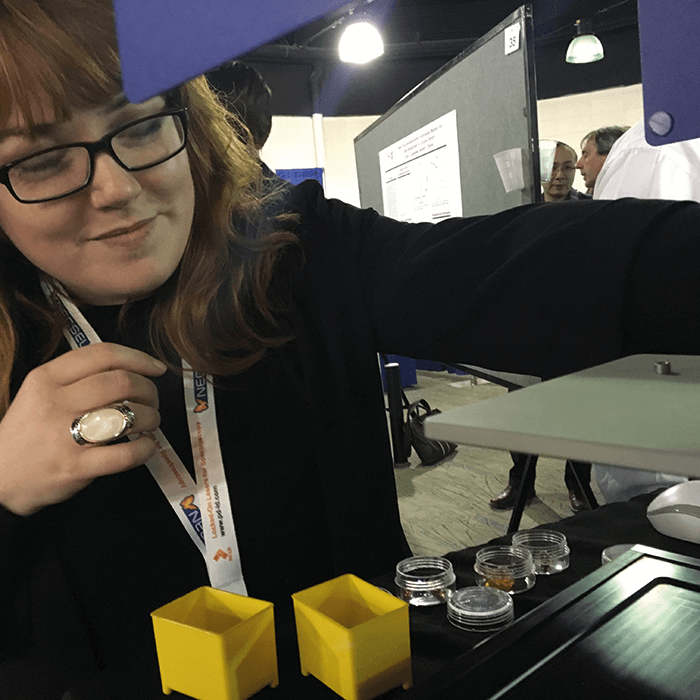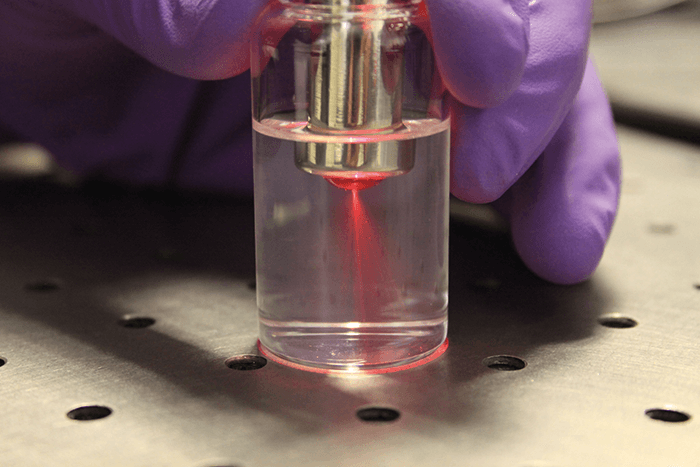The Problem
Raman spectroscopy is a great tool for quality control, product verification and process monitoring – but a lack of staff with appropriate Raman experience often rules out its use. Undergraduate chemistry students rarely get exposure to – never mind experience with – Raman spectroscopy. Our research suggests that when it comes to teaching the technique, price is the primary barrier, so we set out to create a low-cost, capable Raman laboratory system that is suitable for both teaching and research at any level.Background
Strong Raman talent is simply not available below the PhD level. And though postdocs are a good source of team leaders, we also need experienced Raman users at the technician level. At MarqMetrix, we’re doing some exciting things in the Raman space; we need people who understand the technology and are able to explain it to someone else, but we were having a very hard time finding the right people. We wondered if we could somehow help build the pool of talent. We didn’t see any commercial solutions that were designed for the academic market – many commercial solutions are pieced together, and therefore not “student-proof” or safe. We frequently hear from lecturers, “We have a Raman over there but ‘X’ component is broken, or piece ‘Y’ is missing, so we haven’t taught Raman in three years.” MarqMetrix and Hellma decided to join forces to develop a moderate-cost Raman system that is specifically designed for training and academic use, but with a shallow learning curve. We were clear from the outset that we weren’t designing an instrument for our usual scientist customers – we wanted to make it accessible to people who had no familiarity with Raman. Equally, we didn’t want it to simply be a “black box” – we wanted it to be part of a curriculum. We also felt it was important to maintain a high level of performance that matched much of what we already do in the Raman world – in other words, we didn’t want lower cost to mean lower performance.

The Solution
In fall 2015, we mocked up the first prototype, dubbed “Project MOMO.” The instrument makes use of our TouchRaman™ Ballprobe®, which only needs to touch the sample to make any measurement, removing a lot of method subjectivity and quashing concerns about how to effectively perform a Raman spectroscopy measurement – or what we call the “why can’t I do this as well as my neighbor?” factor. The focus is very much on the value of the technique. Crucially, the onus is not on teaching staff to bring themselves fully up to speed with Raman; the project is all about being able to cover the basics of Raman in a week – both in coursework and in the laboratory. To that end, we provide an accompanying curriculum, which Hellma made possible by partnering with Justin Shorb from Hope College in Michigan. The instrument and curriculum combination allows you to explain the concept in the classroom in the morning and by the afternoon you can be performing effective Raman experiments. Clearly, not all of the nuances of Raman can be covered in a single day, but we want students to be able to approach it immediately from a practical point of view. Safety was a primary concern, as Raman spectroscopy is an optical technique that uses moderately powerful lasers. We knew from past experience that if students can break something, they will, so we designed a hardened instrument that was capable of withstanding the rigors of an undergrad teaching lab. To make it student (bomb) proof, we had some interesting and amusing discussions. For example, the distance between the hardened probe and the base is smaller than a human head – just in case a student thinks it might be funny to attempt some brain measurements. It’s also housed as a full enclosure with the lid interlocked to the laser so that it can’t be used with the cover open. The idea of simplicity and accessibility is reflected throughout – there are no peripherals above and beyond the instrument. There are no fiber connections, no external probe... nothing “breakable”. As the final design became reality, the MOMO was rechristened the REVA - the Raman Energy Vibrational Analyzer. The REVA includes a built-in PC and ships with a monitor, a mouse and a keyboard. It has one button, a USB port and an HDMI cable – and that’s it. REVA is still a lab-grade instrument, capable of high-quality measurements in hundreds of milliseconds, spectral resolution under 9 cm-1, and high signal-to-noise ratio.Named after Momofuku Ando, the inventor of Cup Noodles, Project MOMO (now re-named REVA) operates on similar principles to Ando’s quick and simple noodle-based concept. The Japanese inventor came up with the concept of instant noodles-in-a-cup in 1971, and the idea spread across the globe. The fact that anyone could make a tasty hot snack in just a few minutes gave it mass appeal. Hellma and MarqMetrix felt there were parallels with their own mission to increase accessibility of Raman; giving students easy access to low-cost instrumentation, and allowing them to perform Raman spectroscopic analysis in a matter of minutes – almost “instant Raman”...
In reality, not all applications need high resolution or high sensitivity; sometimes you get sold a Ferrari when what you actually need is a capable Sedan. One of our collaborators works with the Navy on fuel quality assessment and asked us if there was a way to move the capability “on ship”. We began by trying to figure out how we could provide someone with limited expertise with the tool, but also make it simple, safe and highly capable. It would also need to be rugged – the Navy sailors were unlikely to show it any kindness. For the first iteration, we just added a lab jack on the bottom, built the frame, and enclosed it all in the head with the probe down. In fact, that instrument was one of the early inspirations for REVA.




